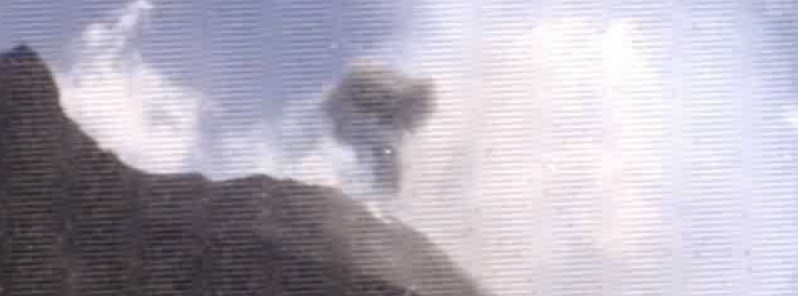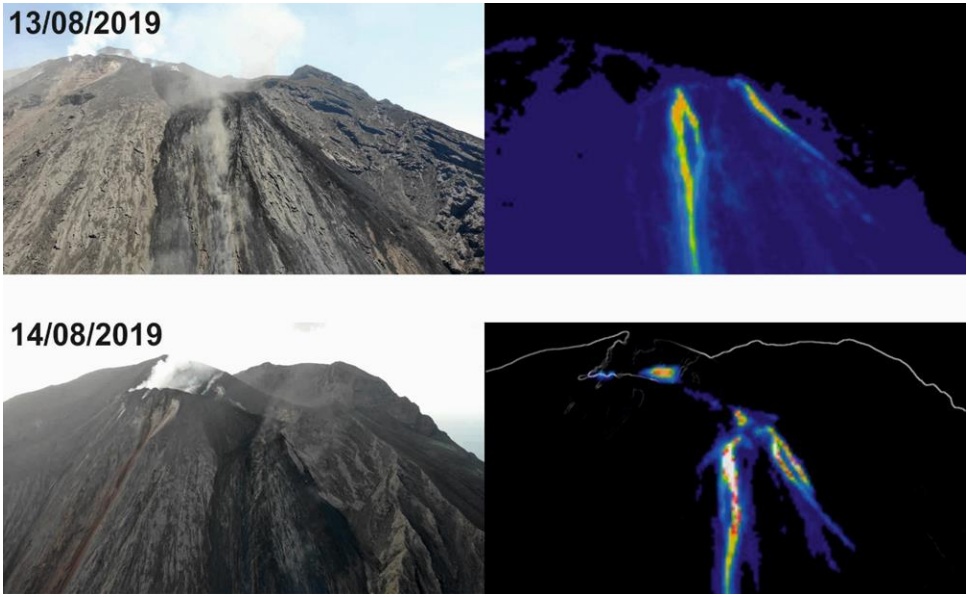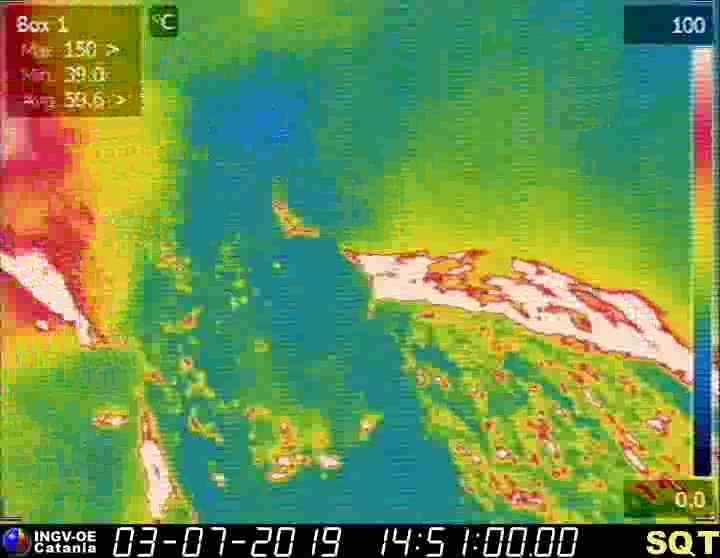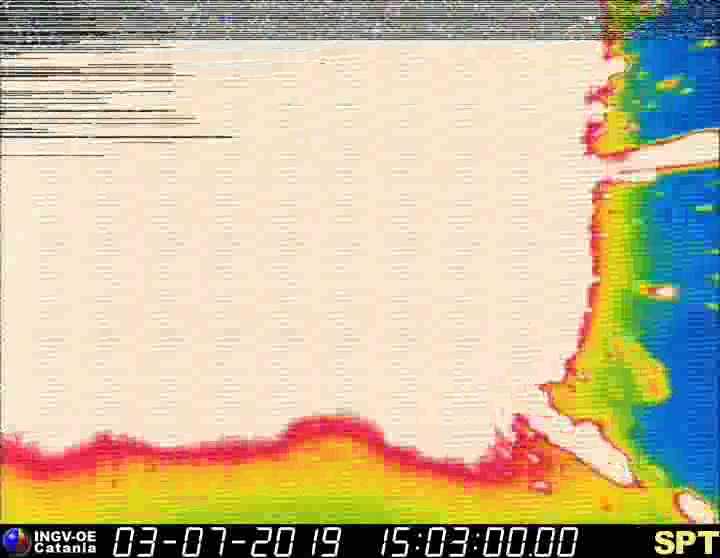Intense activity at Stromboli volcano, Italy

Intense effusive activity from numerous vents at Stromboli volcano in Italy has resumed again on August 18, 2019, after several days decreased activity.
Frequent and often strong strombolian eruptions occur from several active vents in the crater terrace. Lava from the southwest rim seems to have increased its activity and feeds a lava flow that reaches about halfway down the slope of the Sciara del Fuoco, Dr. Tom Pfeiffer of the Volcano Discovery reported August 18.
As far as the amplitude of the volcanic tremor is concerned, there are no significant variations compared to what INGV reported in a detailed press release on August 16.

Images taken by the Punta Corvi thermal camera on August 14, 15 and 16.
Thermal images and photographs taken during surveys carried out on August 13 and 14 showed two ephemeral mouths located at 730 m (2 395 feet) and 710 m (2 329 feet) a.s.l.
Lava flow on August 14 was estimated at about 500 m (1 640 feet) a.s.l.

Image credit: INGV
On July 3, 2019, Stromboli experienced its strongest eruption since 2007.
Civil protection authorities said one hiker was killed after molten material ignited a series of fires.
The Italian news agency ANSA said the eruption sent about 30 tourists jumping into the sea for safety.
One of the witnesses said people in the town of Ginostra barricaded themselves in houses or threw themselves into the sea.


Geological summary
Spectacular incandescent nighttime explosions at this volcano have long attracted visitors to the "Lighthouse of the Mediterranean."
Stromboli, the NE-most of the Aeolian Islands, has lent its name to the frequent mild explosive activity that has characterized its eruptions throughout much of historical time. The small, 924-m-high (3 031 feet) island is the emergent summit of a volcano that grew in two main eruptive cycles, the last of which formed the western portion of the island.
The Neostromboli eruptive period from about 13 000 to 5 000 years ago was followed by formation of the modern Stromboli edifice. The active summit vents are located at the head of the Sciara del Fuoco, a prominent horseshoe-shaped scarp formed about 5 000 years ago as a result of the most recent of a series of slope failures that extend to below sea level.
The modern volcano has been constructed within this scarp, which funnels pyroclastic ejecta and lava flows to the NW. Essentially continuous mild strombolian explosions, sometimes accompanied by lava flows, have been recorded for more than a millennium. (GVP)
Featured image credit: INGV

Commenting rules and guidelines
We value the thoughts and opinions of our readers and welcome healthy discussions on our website. In order to maintain a respectful and positive community, we ask that all commenters follow these rules.